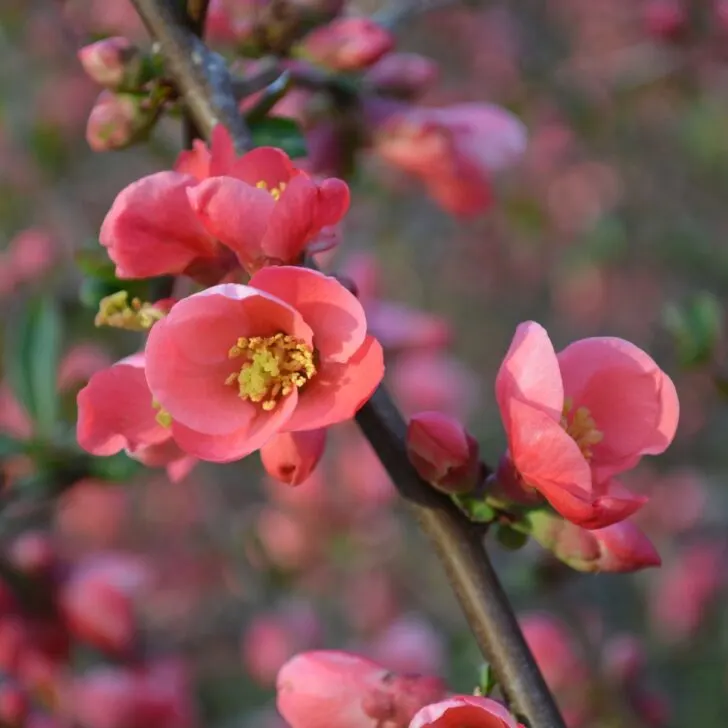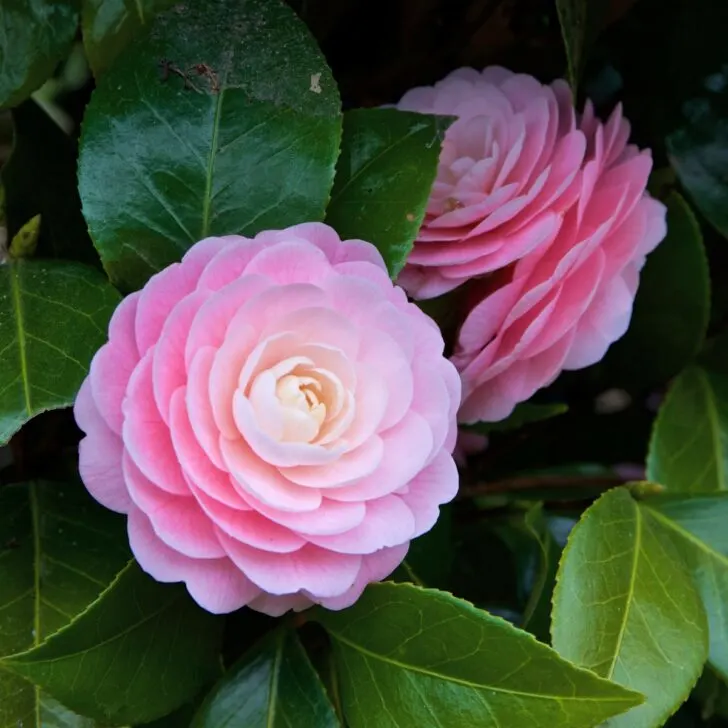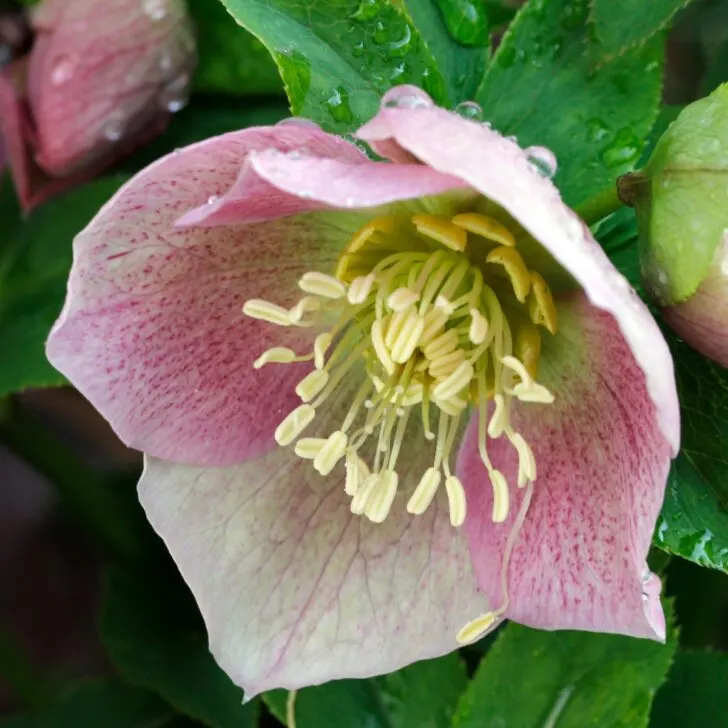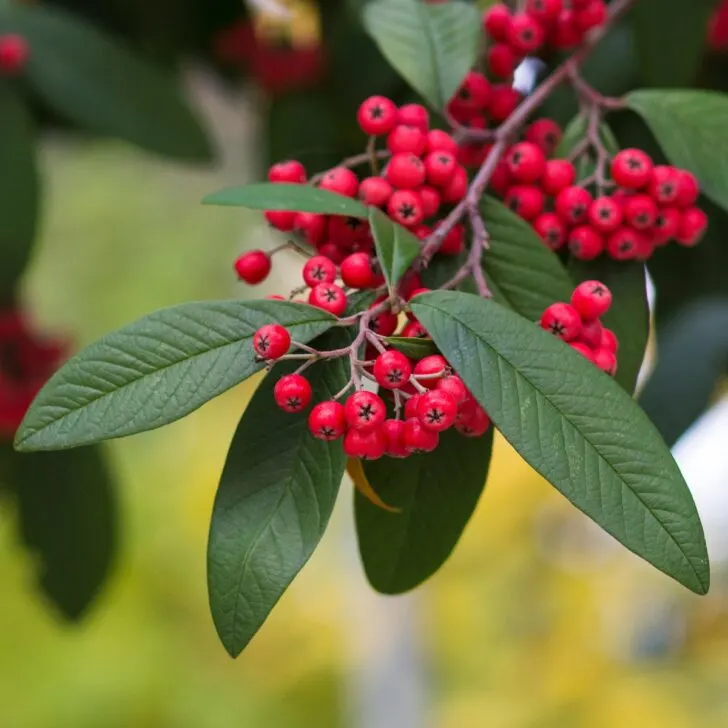Winter jasmine features yellow flowers that bloom in January! Learn how to grow winter jasmine for an early pop of color in your garden!
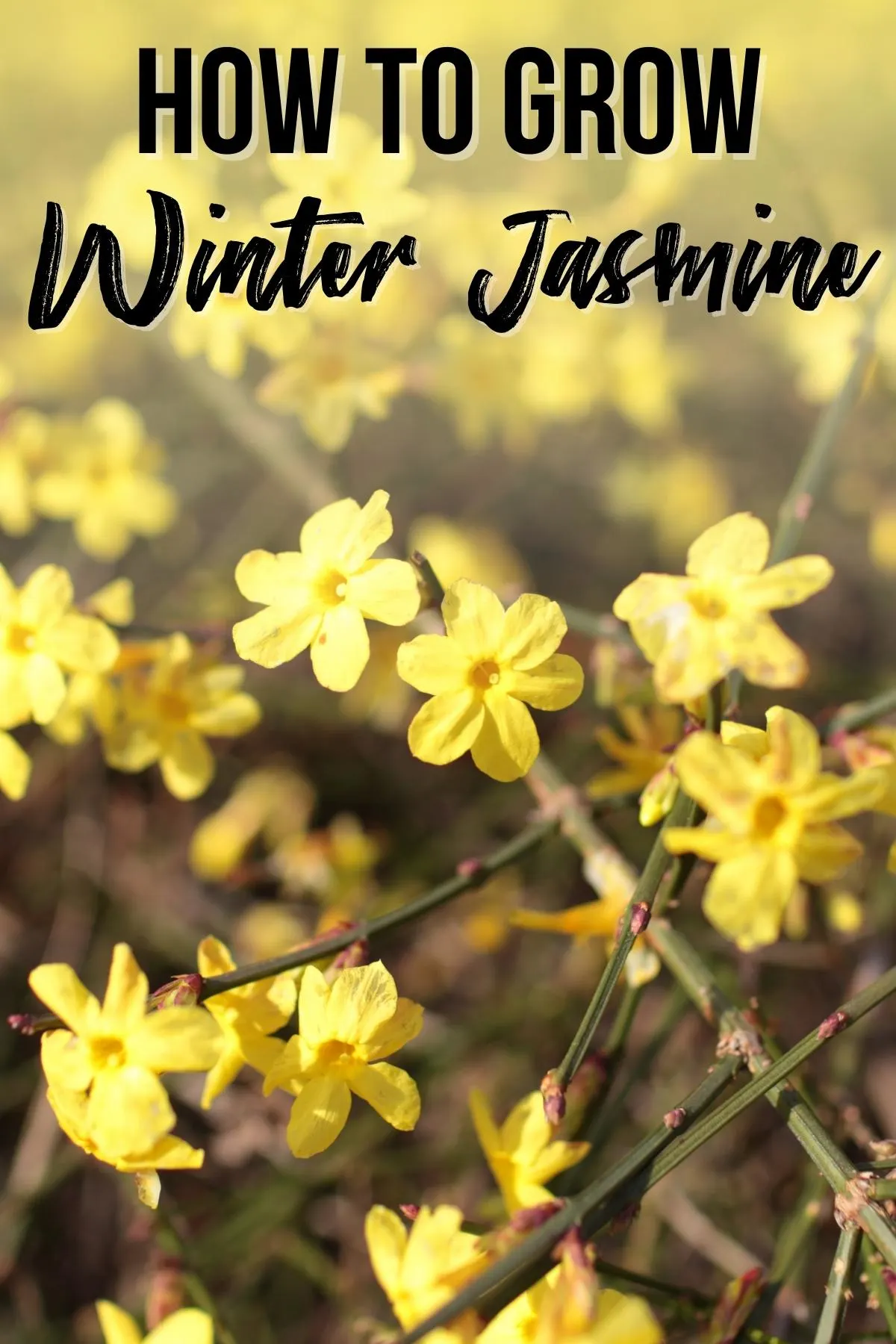
Winter jasmine’s joyful yellow flowers can make the cold days of winter feel like spring. This vining shrub is among the earliest to bloom in the New Year. You’ll even find winter jasmine flowers popping out on stems in the snow!
Unlike other species, winter jasmine does not have much scent. But it produces an abundant succession of flowers in the first days of January before leaves appear. Blooming peaks in February and finishes in March.
In addition, the nectar provides a desirable food source for pollinating insects when little else is available. There are several species of jasmine, but if you want to grow this winter-blooming type, look for Jasminum nudiflorum.
This post contains affiliate links for your convenience. Purchases made through these links may earn me a small commission at no additional cost to you.
When to Plant Winter Jasmine
You can plant winter jasmine in early spring or in the fall. If you plant in spring, it’s likely to bloom the next winter season. With a fall planting, you can expect the foliage to grow, but you’ll probably have to wait a year for flowers.
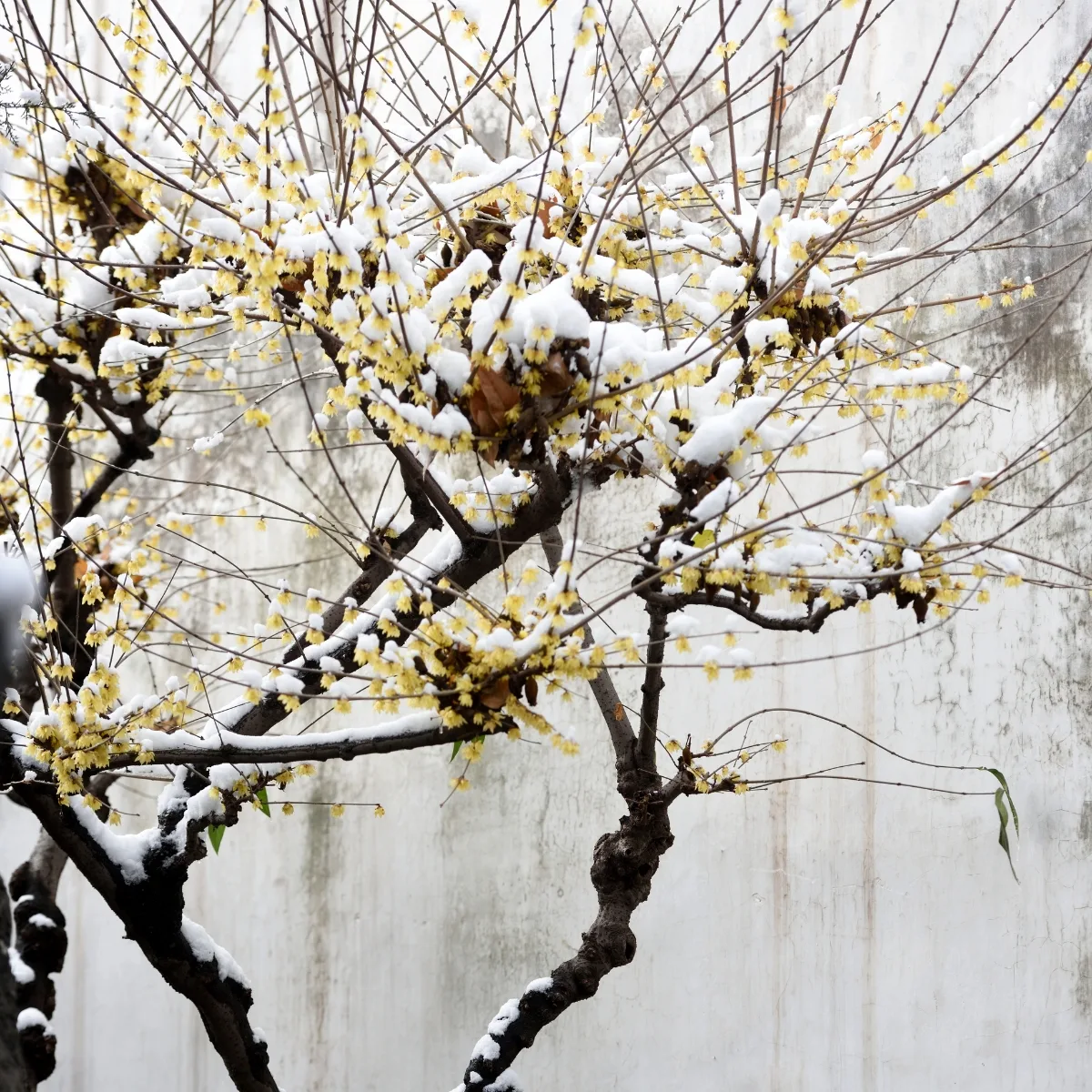
Where to Plant Winter Jasmine
Winter jasmine blooms abundantly when planted in full sun and in moist soil that does not get waterlogged. This flowering shrub can grow in clay soils and ground with minimal nutrients as long as it has adequate drainage and regular water.
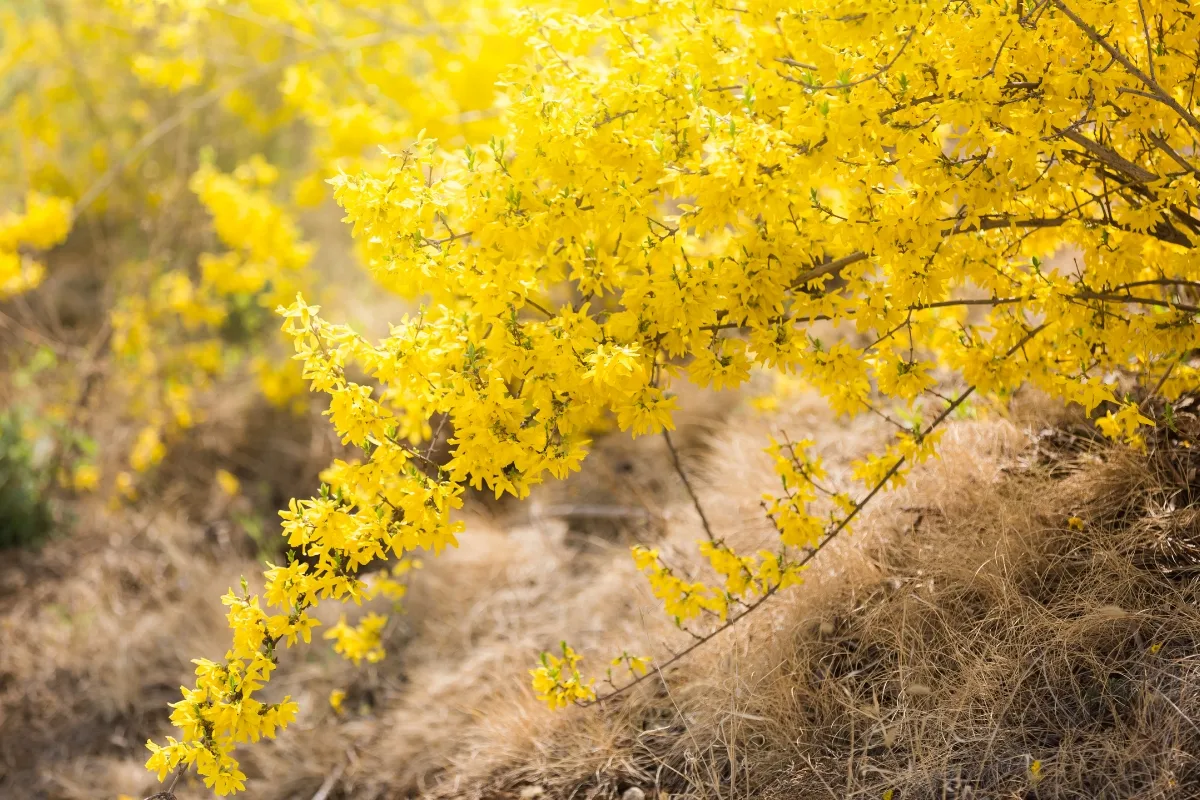
However, when established in optimum conditions, it spreads if it’s not pruned back. One way to control this tendency is to plant it in a location with partial shade where it grows more slowly but flowers less.
You can grow winter jasmine in containers where it’s easy to prune and shape into an attractive low shrub. With yearly pruning, it does well as a border or hedge. Due to its vining nature, winter jasmine can also be grown as an espalier on a trellis or fence.
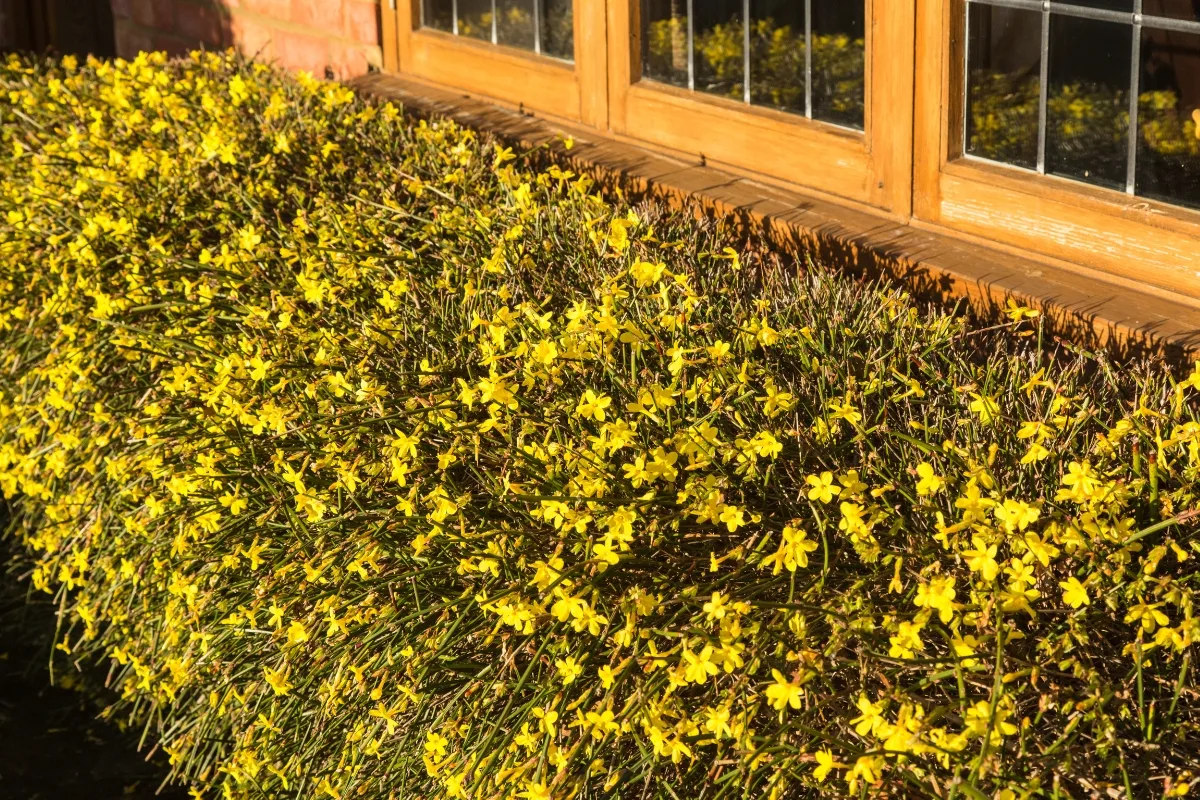
To produce flowers, winter jasmine needs several weeks of temperatures below 60°F, but temperatures below 5°F can kill it. For this reason, it’s most suitable for USDA planting zones 6 to 10.
How to Plant Winter Jasmine
There are four ways you can start growing winter jasmine:
- Seeds
- Transplants
- Cuttings
- Layering
Growing Winter Jasmine from Seed
You can buy winter jasmine seeds at garden supply stores or collect them from ripe seed pods in summer. Soak the seeds overnight, then plant them about ⅛-inch deep in 4-inch pots filled with a good-quality potting mix.
Keep the pots watered but not soggy. Cover the containers with clear plastic domes to prevent them from drying out. Put the pots in a sunny location until they sprout and grow two sets of true leaves, then transplant into the garden or a container. It’s a good idea to harden off the small plants for a week or two before moving them outdoors.
Growing Winter Jasmine from Potted Plants
You can buy potted winter jasmine plants and transplant them into the garden. The best time to do this is in spring when daytime temperatures are at least 60°F. Dig a hole as deep as the pot and twice the width, set the plant in the hole, backfill the soil, and water the area thoroughly.
Growing Winter Jasmine from Cuttings
You can take cuttings from a vigorously growing plant in the fall, or even purchase them online. Cut a stem about 6 inches from the tip directly below a leaf node. Remove all the leaves at the base of the cutting, leaving a few at the top end. Strip off ½ inch of bark from the bottom of the cutting and dip it into rooting hormone.
Then, place the base of the cutting into a pot filled with a mixture of equal parts clean sand and coconut coir or peat moss. Water the container until liquid runs out of the bottom, cover it with a clear plastic dome, and put it in a location with indirect light at a temperature of 65° to 75°F. Mist the pot regularly.
After new leaves start growing on the cane, wait about three weeks, and then transplant the cutting into the garden or a container.
The video below shows you this simple process, and what to expect at various stages of growth.
Growing Winter Jasmine by Layering
Winter jasmine sprouts new roots wherever a cane comes into contact with the soil. You can use this growth habit to sprout new sections for transplanting.
Find a healthy stem on an established plant that is long enough to pull down to the ground. Downward facing branches are easier to manipulate without breaking.
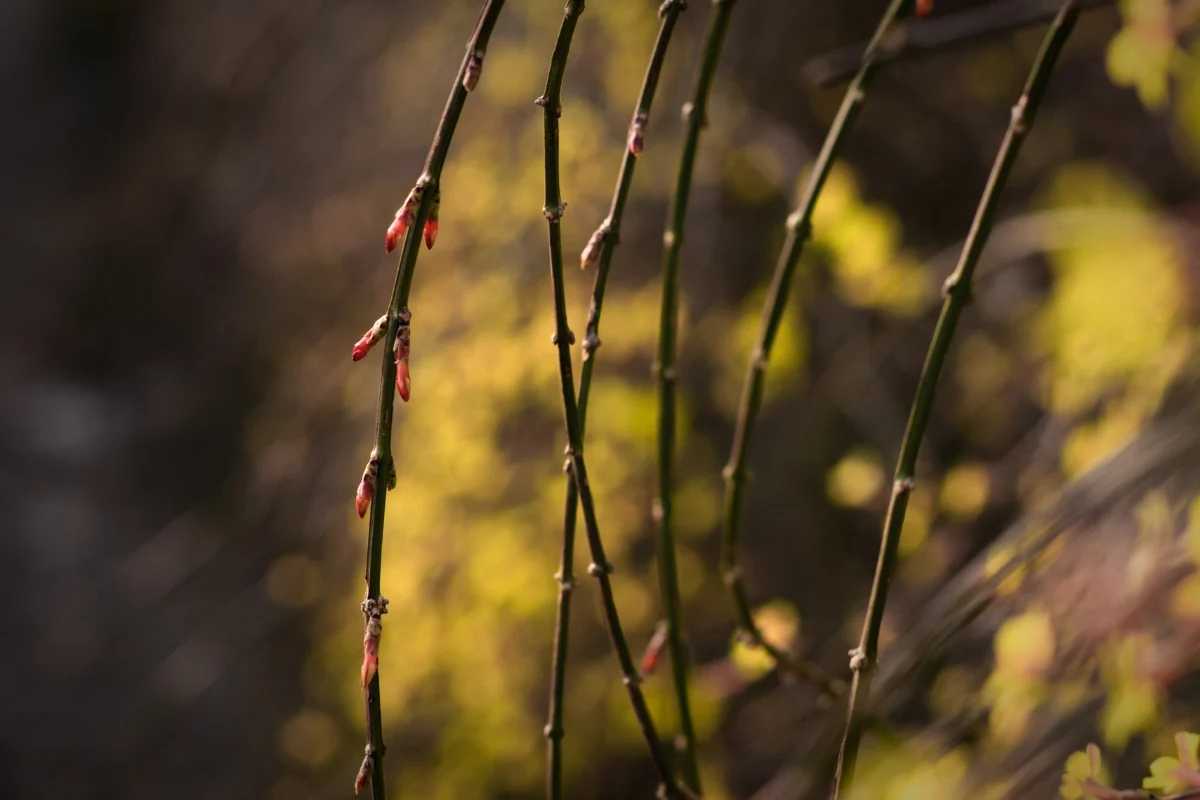
Next, using a sanitized knife, remove a one inch long section of the top layer of bark around the stem approximately one foot from the growing tip of the branch. An inch further down the cane, cut away another circular layer of bark, and then make a shallow slit connecting the two bare spots.
Dust the cut areas with rooting hormone, then place the cut sections in contact with the soil, keeping it in position with a brick or wire landscape staple.
Keep the soil moist and watch for roots to form in about three weeks. When a root system develops, cut the stem free from the parent plant, carefully dig up the roots, and transplant it into a container or another area of the garden.
Caring for Winter Jasmine
Winter jasmine plants look their best when you cut dead stems back to the ground after the flowers finish blooming. The video below gives a good overview of when and how to prune winter jasmine.
Water the plants when weather conditions are dry, but don’t let the soil get waterlogged. When the ground's surface is dry, one inch of water once or twice a week is usually adequate.
Check out these other plants that bloom in winter!

